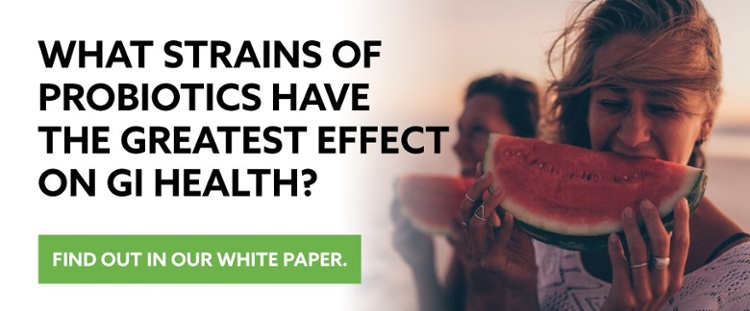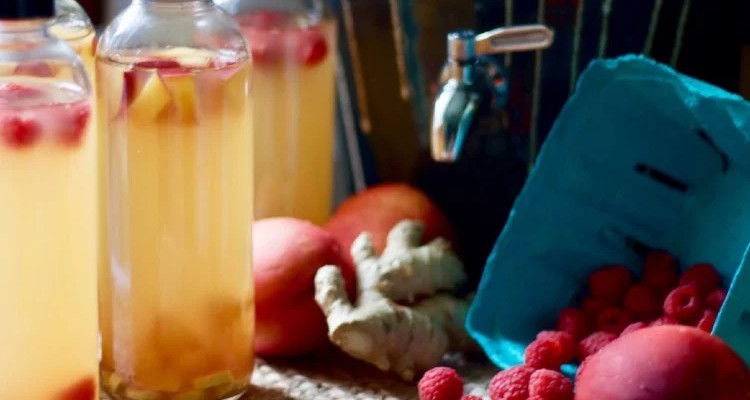
Amongst all supplements on the market, there are perhaps none less complicated than probiotics.
Probiotics are widely accepted as beneficial, but wading through the marketing lingo, scientific terminology, array of information, and the fact that probiotic supplements are loaded with living organisms, can make choosing the right product a daunting task.
Humans have an incredible diversity of naturally occurring gut bacteria, likely ranging anywhere from 500-1,000 different species.[1] Which species will survive and thrive depends on many factors, ranging from existing gut health, levels of inflammation, diet history, and more.
As a consumer, the bottom line is learning to distinguish what to look for when buying a probiotic, and the first question is understanding the difference between multi-strain probiotics, and others.
Multi-Strain, Mono-Strain, and Multi-Species Probiotics
First and foremost, let’s take a moment to define what these common buzzwords mean as you read manufacturer sell-sheets or peruse the probiotic supplement section of your local health food stores and online dispensaries.
When talking about probiotics, the conversation surrounds the genus or the genera and the species. The two most common genera are Lactobacillus and Bifidobacterium, and between these two, there are many different strains. It’s also important to pay attention to the quantity of CFUs, or colony-forming units.
Probiotic Vocabulary:
- Mono-Strain refers to one genus and species, such as Lactobacillus acidophilus or Bifidobacterium longum.
- Multi-Strain refers to one genus with multiple species, such as Lactobacillus acidophilus, Lactobacillus plantarum, and Lactobacillus brevis combined.
- Multi-Species refers to different genera, such as Lactobacillus acidophilus, Bifidobacterium SPP, and Saccharomyces bouldardii combined together.
- CFUs are colony-forming units. It is generally accepted that the more CFUs present in a probiotic product, the higher the potential for a beneficial amount to survive the journey from mouth to gut.
Now, let’s move on to how multi-strain probiotics work and why they are generally considered more beneficial than mono-strain products.

Mechanisms of Action
While there are certain specific health circumstances not supported by multi-strain probiotics, healthy individuals looking to build and maintain a salutary and diverse gut microbiome will benefit from a diverse product in the following ways:
Improved Growth Performance
As mentioned above, one of the most important factors when choosing a probiotic is how well it holds up on the acidic journey from mouth to the gut, and beyond.
For this reason, a multi-strain probiotic with a high CFU count (many integrative and functional medicine doctors recommend 50 billion CFUs) dramatically increases the number of probiotic units that will survive the journey and successfully colonize in their respective microbiomes. Another factor to consider in supporting survivability is taking your probiotic with food, as some research suggests that other flora, prebiotics, and probiotics in foods will likely help the digestion and assimilation of a probiotic supplement.[2]
However, whether or not you should take a probiotic with food can also depend on the type of food and the strain and delivery method of nutritional supplements.
Wider microbial spectrum
While more research is needed, some studies suggest that a wider variety of species or strains can potentially support an increased prohibition of gut challenges.*
It is similar to why it is important to vary your diet to benefit from an array of health-promoting nutrients, antioxidants, and plant compounds. A variety of probiotic strains and species is more likely to achieve synergistic effects and stimulate different biochemical pathways and cellular actions.*[3]
Tolerance to New Flora
Studies have been done on the gut microbiome of people who travel extensively (even within one country), and their variety of gut flora tends to be significantly more vast than non-travelers. If you’ve ever visited a foreign environment and consumed foods or beverages your body isn’t accustomed to, it sometimes ends in unpleasant symptoms like gas or bloating. A robust, diverse baseline of gut flora will help you tolerate exposure to new bacterias, which is yet another benefit of a varied diet, and a multi-strain probiotic.*[4]
How to Diversify Flora
With a broader understanding of why having more gut flora diversity is essential, let’s now discuss various methods for achieving a more diverse gut microbiome with a variety of flora.
Diversify foods
A healthy diet is the foundation of a well-functioning and diverse gut microbiome. Focus on food variety, and regularly include fermented foods like kefir, kombucha, yogurt, raw sauerkraut and kimchi, fiber from daily vegetables and fruits, prebiotic foods like Jerusalem artichoke, garlic, onion, leeks and asparagus, local and seasonal foods, while avoiding processed and packaged foods.
Probiotic product selection
In an ideal world, probiotics will not come from a pill, powder, or other supplemental products. Instead, it will come from a variety of the healthy foods mentioned above. However, many modern-day factors can make this challenging to achieve. This reality means that along with a healthy diet, a therapeutic dose of a multi-strain probiotic could be highly beneficial in keeping gut flora to where it needs to be.*
When it comes to selecting a product, these three rules apply:
- Look for a product with various strains or species
- The more CFUs the better, ideally 50 billion CFUs or more
- Change your probiotic supplement every six months to ensure optimal variety
Are Multi-Strain Probiotics Always the Right Choice??
For most healthy individuals, multi-strain probiotics are usually the way to go. However, when dealing with certain health challenges, it’s better to consult your doctor before choosing a product.
If you suspect issues with SIBO (small intestinal bacterial overgrowth) or any other gastrointestinal problem, a multi-strain probiotic might not be the correct option for you. Speak with your doctor or nutritionist about other approaches, such as starting with a mono-strain probiotic or even avoiding probiotics altogether while the body reaches a more balanced state and is ready to ramp up flora diversity and quantity slowly.
The human microbiome is a complex topic. However, with a little knowledge, choosing the right probiotics to suit your needs shouldn’t be a massive undertaking. For relatively salubrious people without any outstanding health concerns, a multi-species or multi-strain probiotic with a high CFU count and a balanced whole foods diet is likely the best route to take.
By Dr. Ramneek Bhogal

*These statements have not been evaluated by the Food and Drug Administration. This product is not intended to diagnose, treat, cure, or prevent any disease.
[1] "NIH Human Microbiome Project defines normal bacterial ...." 13 Jun. 2012, https://www.nih.gov/news-events/news-releases/nih-human-microbiome-project-defines-normal-bacterial-makeup-body. Accessed 6 Aug. 2020.
[2] Tompkins TA, Mainville I, Arcand Y. The impact of meals on a probiotic during transit through a model of the human upper gastrointestinal tract. Benef Microbes. 2011;2(4):295-303. doi:10.3920/BM2011.0022
[3] https://www.sciencedirect.com/science/article/abs/pii/S0168160504002855
[4] Conlon, M. A., & Bird, A. R. (2014). The impact of diet and lifestyle on gut microbiota and human health. Nutrients, 7(1), 17–44. https://doi.org/10.3390/nu7010017


















